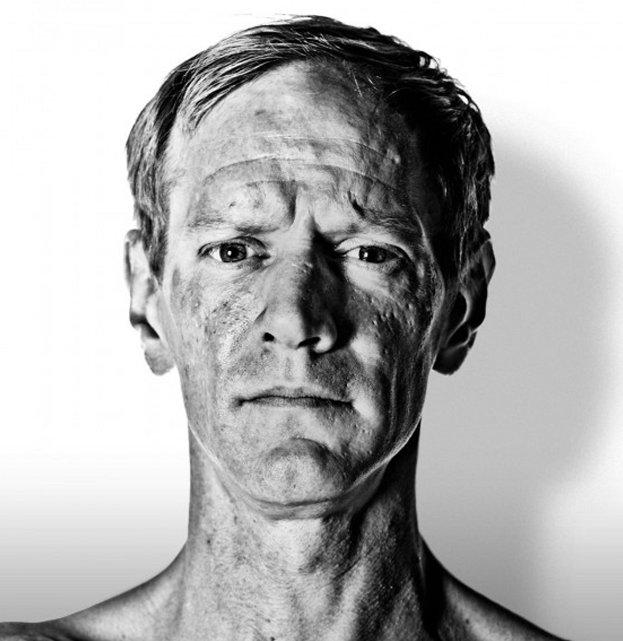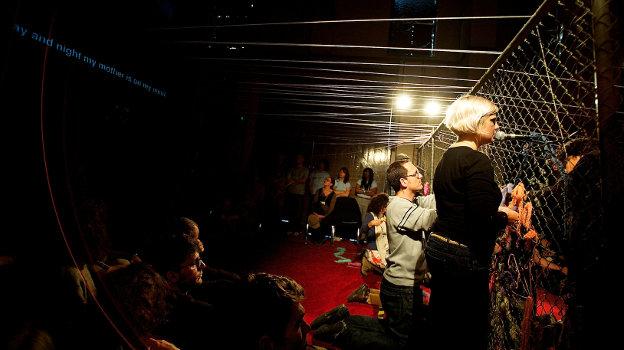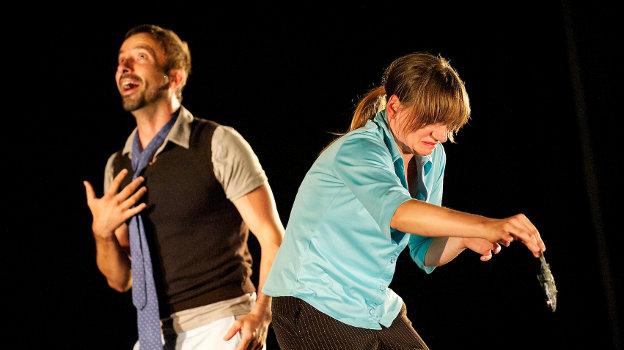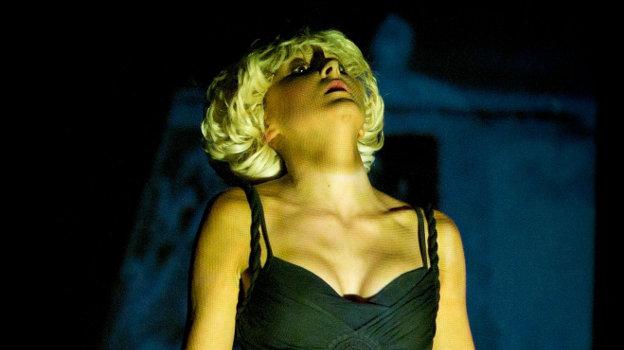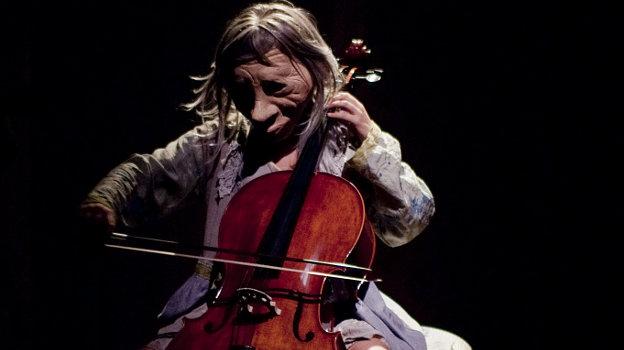The Con Artist is a new work by New York composer / theatre artist John Moran. One ongoing feature of John Moran’s work makes portraits of peoples and places in sound through the careful arrangement of everyday utterances and conversations. After visiting Mayfest previously with the semi-autobiographical John Moran + Saori (…in Thailand) he has been asked back to reveal his latest work.
Moran opened this premiere of the show by telling us it wasn’t finished, naturally putting us into doubt, but followed this by charming us with a range of excuses and stories. This informal opening appeared to offer some insight into his life, the life of a composer: travelling between countries, and dealing with floods in Bangkok and drug-infused procrastination in Amsterdam.
The difference in this work to Moran’s previous sound portrait pieces is the focus on the men in his life, as opposed to the women. The portraits are composed from natural, everyday sounds of men speaking, walking, sitting, drinking. As he plays us these carefully arranged scenes, Moran mimes his characters’ behaviour and gestures, keeping in time with the sound. This task is very engaging to watch – getting the action right on the note is satisfying. His work brought us sonically to a waltzing Italian man, a ten year-old boy, and an English gentleman, each embodied with great physical precision. These portrayals were woven in with a portrait of Moran himself trying to finish this very piece of work – a humorously self-referential touch that shows us his struggles to focus on work.
Halfway through Moran stopped to ask us, ‘Do you hear the music yet?’. He went on to explain how everything is in seven beats, asking us to concentrate on the complexity of the sounds. As he mixes up the portraits and repeats them relentlessly, a tight and absorbing choreography emerges and we enter into a blur of characters and situations.
Moran’s relaxed presentation encourages attention on the melody and lyrical nature of everyday sounds and the particular intonations of different people. Though he might have felt it was ‘unfinished’ I found this an intriguing and enjoyable performance that warmly draws out the uniqueness of every personalities as defined by our own personal sounds and rhythms.

